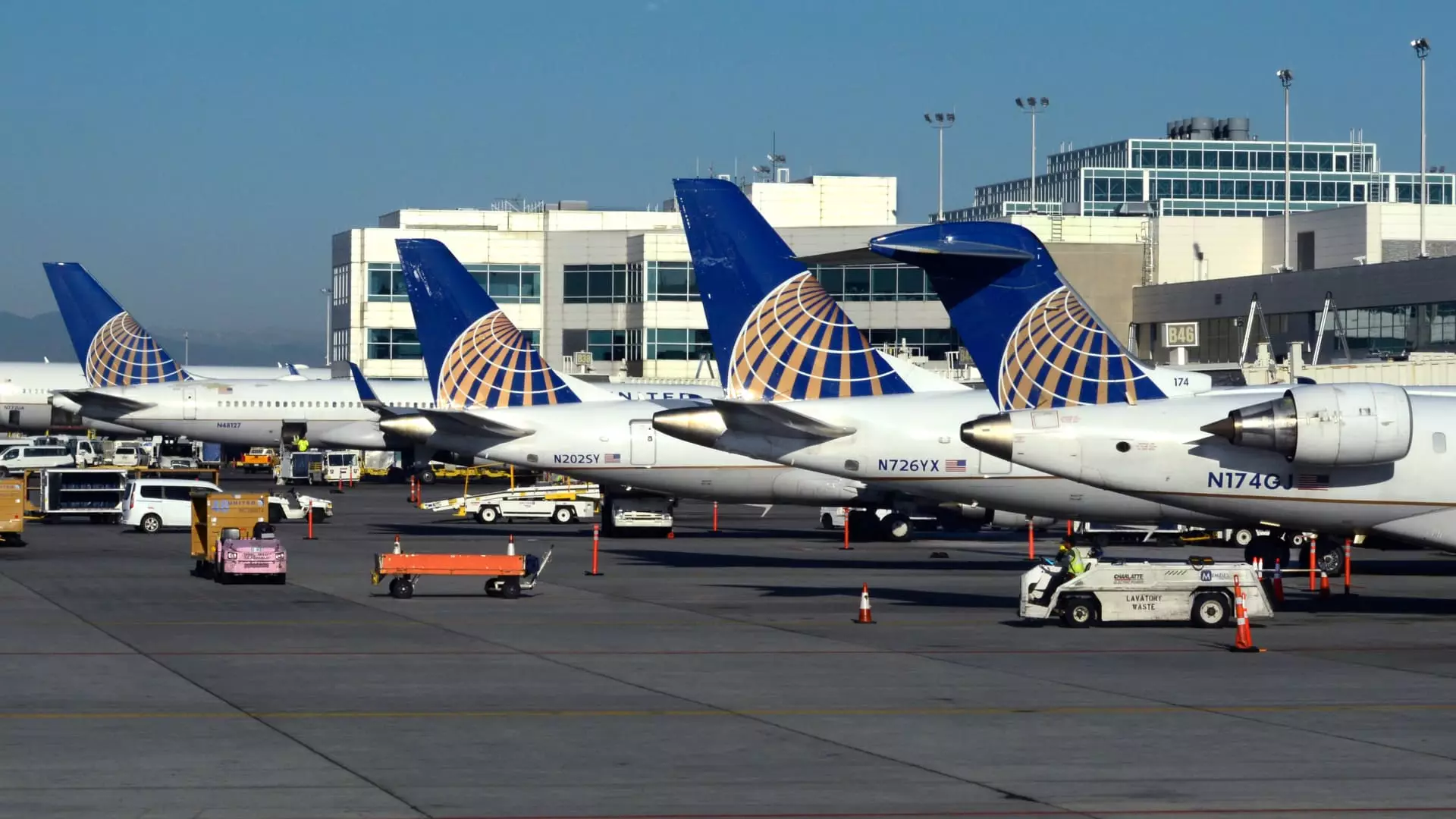United Airlines is diving into contentious new territory by raising fees for its annual airport lounge memberships and co-branded credit cards with JPMorgan Chase. This decision isn’t just a minor setback for travelers; it exemplifies the airline’s ongoing strategy to monetize every aspect of air travel. The cost increases are aimed at addressing the growing demand for premium services, but the timing couldn’t be worse. As consumers are still reeling from skyrocketing costs in other sectors, adding financial burden in the form of increased fees may lead to a consumer backlash.
Value vs. Cost
Richard Nunn, head of United’s MileagePlus program, asserts that the enhanced benefits—which include rideshare credits and discounts on award flights—outweigh the cost increases. However, it’s worth questioning whether these enhancements genuinely provide notable value or if they simply serve as a facade to justify the higher fees. In an increasingly competitive air travel market where travelers are searching for value, this may not be the clever strategy United thinks it is. Are points discounts and rideshare credits enough to sway the frugal flyers in an economy that proves consistently unpredictable?
A Crowded Field of Travelers
United is not alone in its fee-hiking frenzy; a pattern is emerging wherein airlines, including Delta and American, are gradually narrowing the access and widening the prices of essential services like checked bags and seat selections. It seems like every other day a new requirement is introduced, coupled with an increase in price. As the number of premium-credit-card holders grows, overcrowding in airport lounges has become commonplace, but price hikes won’t solve this issue. Instead, they will likely diminish the allure of the lounges as members begin to question their cost-effectiveness.
The Loyalty Trap
With membership in the MileagePlus program ballooning by around 17 million in the past two years, United appears to want to extract as much loyalty revenue as possible from its consumer base. They are painting a rosy picture of perks to attract more co-branded card sign-ups, yet this conundrum leads us into a loyalty trap. As more perks become standard and expected, what’s to stop United from continually increasing fees under the guise of added value? Beyond mere transactional relationships, this reflects a deeper trend where the customer feels more like a revenue stream than a valued flyer.
The Financial Outlook
Hot off the press, United reported a staggering $3.49 billion in “other” revenues for the previous year, bolstered primarily by revenue from rewards credit cards and lounge memberships. While this figure might seem impressive, the underlying message is that airlines are becoming increasingly reliant on these ancillary revenues. As consumers who have previously embraced loyalty programs grow weary of constant costs, this line of business could start to falter. The short-term gain might lead to long-term pain, as travelers begin to prioritize feeling appreciated over mere points accumulation.
A Worrisome Trend
While United Airlines wields its pricing power, the cumulative weight of countless fees and increased financial pressures might ultimately alienate its core audience. As a center-left liberal, I view this trend as a troubling implication of capitalism where companies often prioritize profit over customer experience. Given the fragile state of consumer sentiment and the economic realities many face, United may find that alienating travelers in pursuit of quick revenue could backfire in colossal ways. Without a genuine commitment to customer satisfaction, airlines risk losing the very loyalty they are trying so desperately to cultivate.


Leave a Reply